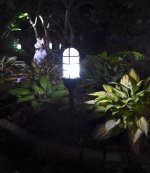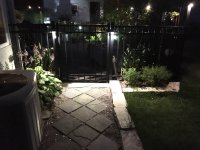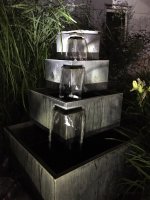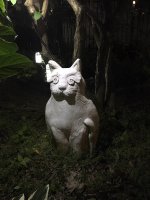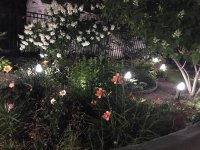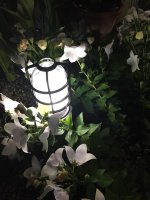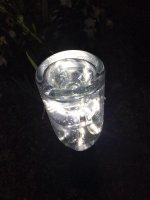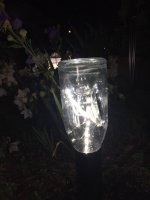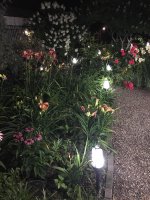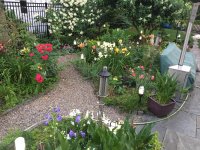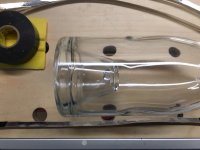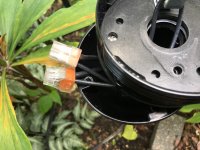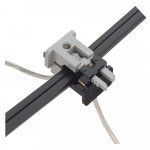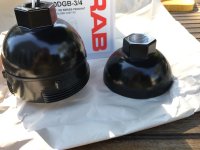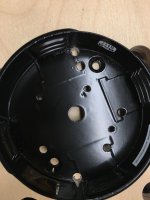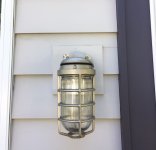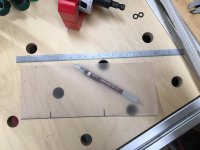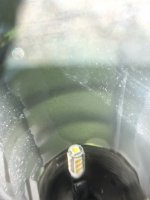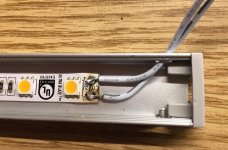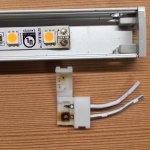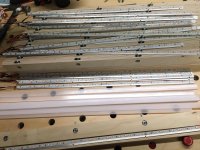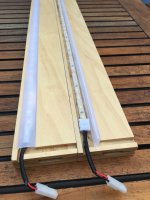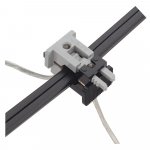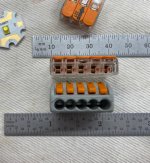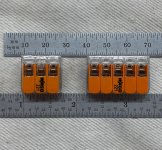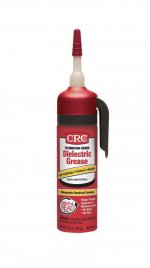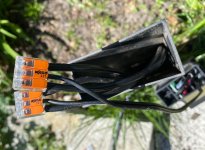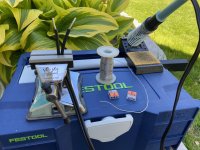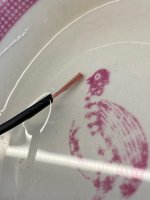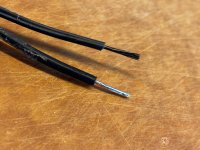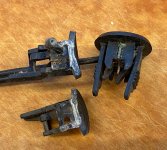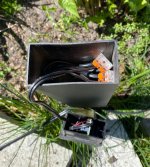Cheese
Member
So, last evening was beautiful and as I was sitting outside just enjoying the lighting, I started to think about a tutorial on LED lighting issues, specifically when it comes to garden lighting.
I initially installed a commercially sold solar lighting system in the garden 15-16 years ago. It was comprised of 30 stainless bollards, each with a small solar panel for a cover, 2 rechargeable batteries inside and using 2 each 5 mm LED's. It was neat at the time because it was a self sustaining system, however one soon realized that this was a system from hell if you were serious about maintaining a back yard that was illuminated for longer than 2 hours per day. [eek]
The solar approach at the time was a great idea, but because of the then available rechargeable batteries, the low efficiency of the available solar panels, the low efficiency of the LED's and the Minnesota winter temperature extremes, the concept just wasn't feasible.
This led me to convert the luminaries from solar to 12V DC. The 12 VDC system has worked extremely well over the last 13 years and it's still working tonight. [smile] I have it connected to a photoelectric cell so it turns on at dusk and turns off at dawn.
The system in the back yard consists of:
30 ground lights
20 downward projecting fence lights
4 spotlights
2 stainless in-stair lights
And 2 lit butterfly baths
This runs dusk to dawn, 24/7 and costs around $1 per month.
The first aspect of this conversation was converting the stainless solar bollards to 12 VDC LEDs and the second aspect, 2 years ago was converting RAB 120 volt dome-down fixtures to 12 VDC dome-up fixtures. Out with the old...in with the new. The RAB vapor proof luminaires are sweet and I use them as they were designed dome-down on the house for general outside lighting. However, adapting them for dome-up fixtures in the garden was an interesting challenge because of the rain and the snow.
If there's some Iinterest in the RAB conversion process let me know.
Here are some interesting snippets from the garden last night.
The RAB vapor proof light converted to 12 VDC LED's in a dome-up configuration.
[attachimg=1]
One of the butterfly baths. An inverted wine bottle with a very deep punt and filled with LED tape.
[attachimg=2]
[attachimg=3]
General ground lighting
[attachimg=4]
[attachimg=5]
Spotlights on the cat & on the fountain
[attachimg=6]
[attachimg=7]
The gate entrance with downward projecting LEDs lighting the pathway while the fence also has downward projecting LEDs at a higher level to highlight some of the taller plantings. You can also see the fountain in the background on the LH side.
[attachimg=8]
I initially installed a commercially sold solar lighting system in the garden 15-16 years ago. It was comprised of 30 stainless bollards, each with a small solar panel for a cover, 2 rechargeable batteries inside and using 2 each 5 mm LED's. It was neat at the time because it was a self sustaining system, however one soon realized that this was a system from hell if you were serious about maintaining a back yard that was illuminated for longer than 2 hours per day. [eek]
The solar approach at the time was a great idea, but because of the then available rechargeable batteries, the low efficiency of the available solar panels, the low efficiency of the LED's and the Minnesota winter temperature extremes, the concept just wasn't feasible.
This led me to convert the luminaries from solar to 12V DC. The 12 VDC system has worked extremely well over the last 13 years and it's still working tonight. [smile] I have it connected to a photoelectric cell so it turns on at dusk and turns off at dawn.
The system in the back yard consists of:
30 ground lights
20 downward projecting fence lights
4 spotlights
2 stainless in-stair lights
And 2 lit butterfly baths
This runs dusk to dawn, 24/7 and costs around $1 per month.
The first aspect of this conversation was converting the stainless solar bollards to 12 VDC LEDs and the second aspect, 2 years ago was converting RAB 120 volt dome-down fixtures to 12 VDC dome-up fixtures. Out with the old...in with the new. The RAB vapor proof luminaires are sweet and I use them as they were designed dome-down on the house for general outside lighting. However, adapting them for dome-up fixtures in the garden was an interesting challenge because of the rain and the snow.
If there's some Iinterest in the RAB conversion process let me know.
Here are some interesting snippets from the garden last night.
The RAB vapor proof light converted to 12 VDC LED's in a dome-up configuration.
[attachimg=1]
One of the butterfly baths. An inverted wine bottle with a very deep punt and filled with LED tape.
[attachimg=2]
[attachimg=3]
General ground lighting
[attachimg=4]
[attachimg=5]
Spotlights on the cat & on the fountain
[attachimg=6]
[attachimg=7]
The gate entrance with downward projecting LEDs lighting the pathway while the fence also has downward projecting LEDs at a higher level to highlight some of the taller plantings. You can also see the fountain in the background on the LH side.
[attachimg=8]

